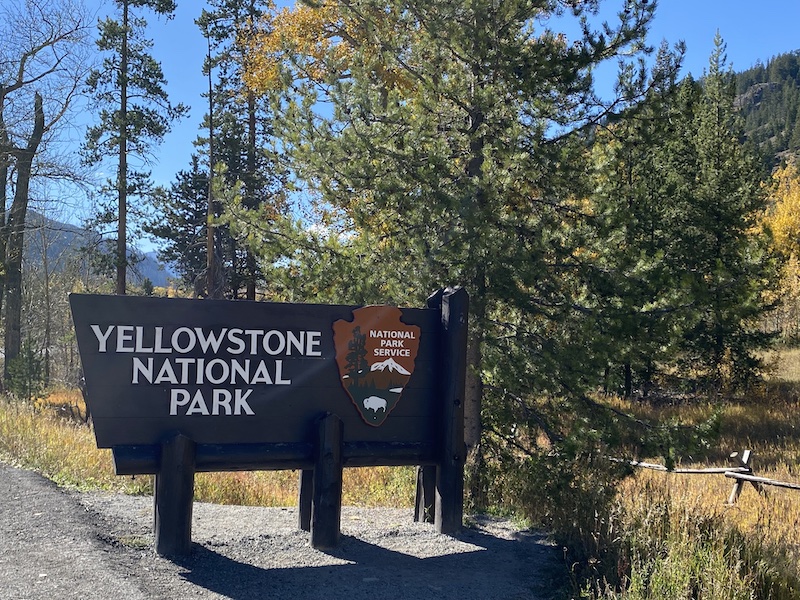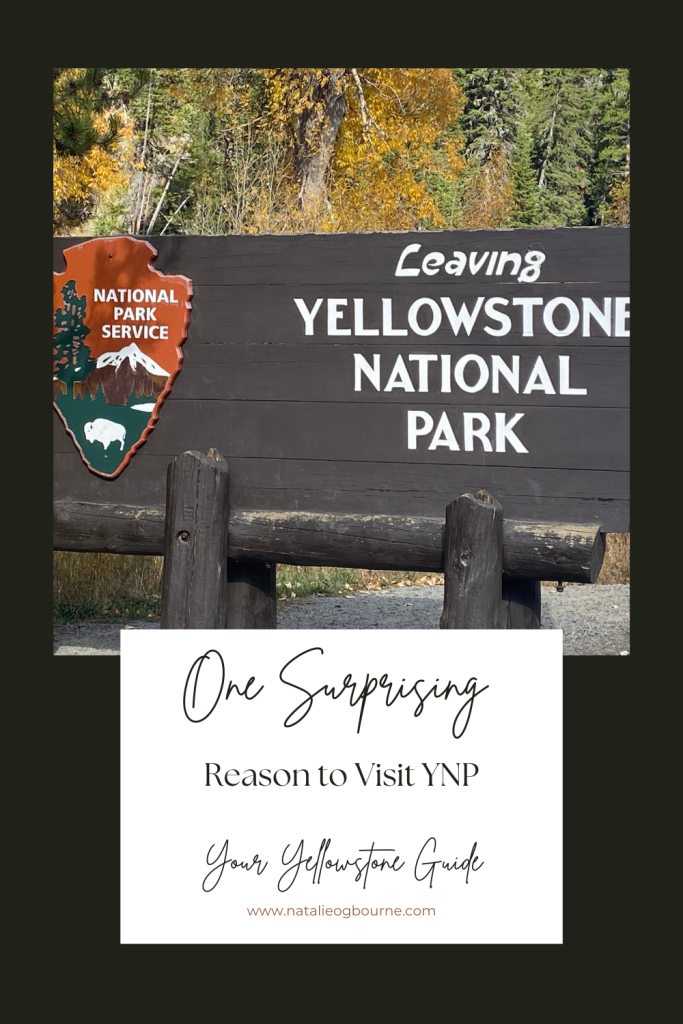
Leaning against the stone stairway of the historic Fort Yellowstone building, I watched the autumn scene unfold. A massive bull elk stood sentry over his painstakingly collected harem. His occasional bugles rang through the settlement—reminding the cows that he was a worthy specimen and warning hopeful bulls skulking around the perimeter that they’d best not trespass. Park visitors pressed in as closely as the rangers assigned to keep space between the edgy animals and curious visitors would allow.
One ranger, who really should have gone into acting, established the boundaries with the practiced use of a bullhorn—maintaining a perimeter from a good quarter mile away. He occasionally moved to a new location to direct drivers not to stop and pedestrians to get back. Even with all that, it was pretty low-key, until a hopeful young bull slinked toward the knot of cows gathered on the green and the dominant bull rose to meet him. The ranger was ready. He sprung into action, assessing the situation, determining that people were standing in the path of danger, and driving from one side of the paved circle to the other to lead them to safety.
“All right, people. This way. And we’re moving. Now.” he barked into his bullhorn as he pointed toward a building.
The scene rolled like a spy movie spoof with the whole group moving surreptitiously from one place to another. Between that spectacle and the saga between the bulls, something caught my attention. Something man-made.
If you’ve read around here long, you know I have a thing about Yellowstone. I’m drawn to its wildness and its wonders, of course, but I’m also drawn to its words. And that day on the historic Fort Yellowstone Lawn, while other people took photos of the bulls battling for mating rights while cows grazed placidly in the background, I found myself composing a shot of a sign:
DANGER
DO NOT APPROACH WILDLIFE
It’s true. Docile and disinterested-looking though they may appear, wildlife is wild, therefore dangerous and best observed and enjoyed from a distance. (Specifically, this means twenty-five yards for all animals except wolves and bears. For those, the span increases to one hundred yards.)
Like its wildlife, Yellowstone’s signs are everywhere and—like signs of all kinds— they’re meant to tell us something we need to know. We need to know where we are and how to make it to our destination. We need to know what we’re looking at so we can understand why it matters. We need to know and it’s the sign’s job to show—to direct, instruct, and draw our attention—often without detracting from what we’ve come to see.
Some Yellowstone signs are standard—the same traffic signs posted in cities, towns, highways, and gravel roads across America. Some are typical for mountains. And some are specific to Yellowstone.
As drawn as I am to the park’s signs, the years have taught me that Yellowstone itself is a sign. There are things we need to know and it’s a sign’s job to show, pointing past itself to the reason it stands there. Yellowstone is a wild place, quite capable of doing the sign’s job of drawing our attention and even directing and instructing us about what we should be looking at. A surprising slice of nature, it stands alongside all of creation—making God known and giving our finite minds a way to comprehend a little more about the infinite. It shouldn’t surprise me, then, that I understand more about God, about His world, and about walking by faith after a visit to Yellowstone.
🧭 What created place helps you comprehend a little more about our creator?
I’m launching into an exploration of Yellowstone’s signs—what they have to say about navigating life by faith and how they help us navigate Yellowstone. Subscribe here to join me. I’d love to have you come along.
take heart & happy trails 🥾
Your Yellowstone Guide often participates in these link ups.
Is it time for you to map out your Yellowstone adventure? Here are a few resources:
- Feeling overwhelmed by planning your Yellowstone vacation? Let me help!. For more information or to schedule, contact me here.
- This is where I start when I need reliable, useful information about planning a visit to Yellowstone. It’s the National Park Service Yellowstone site.
- Find information about Yellowstone’s picnic locations and regulations here.


I took a trip with my son to Yellowstone. We had so much fun. Now, I want to go back.
You asked, “What created place helps you comprehend a little more about our creator?” I love to be on the hill snow skiing. Okay, so I’m a little afraid of wildlife, and they usually aren’t present except for a few moose spottings in the spring.
Thank you for sharing with the Grace & Truth community! I will proudly feature it on my Pinterest board for Grace & Truth Featured Posts. You can see your article here—
https://www.pinterest.com/embracingtheune/grace-truth-christian-link-up-featured-posts/.
The slopes are a delightful place to learn more about God and the life he’s called us to live! And I’m so glad you enjoyed your time in Yellowstone. I always advocate for a return trip. Thanks so much for reading and for featuring this piece.
I love your writing about Yellowstone. It makes me want to go tomorrow. I love what you said about Yellowstone itself is a sign of our Creator and that you understand God a little more each time you visit. I feel that way whenever I am beside the ocean—when the intermingled feelings of fear and awe remind me of God’s power and might but also his great love for tiny ol’ me. Wonderful post, Natalie.
Thanks so much, Ashley. I appreciate your encouraging words. Thanks for sharing the way you experience who God is because of the ocean. He made these things for that very reason.
Merry Christmas to you and yours, Natalie! Thank you for keeping our eyes and hearts open to all the beauty around us. I appreciate you speaking that needed truth into my life and look forward to connecting in 2024.
“Open to the beauty around us.” I love that. I’m looking forward to that, as well!